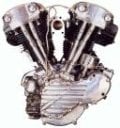tillin9 wrote:
What really surprises me is that more alt-arch people don't know / care about kernel modesetting. I'd think there'd be tons of embedded MIPS / ARM people who program devices with PCI buses (you'd be surprised that this is the majority, and most of the rest have PCIe 1x) who would love this. Just stick in a PC video card and have a low-end desktop environment for debugging / development instead of messing around with serial ports and JTAG.
In all fairness, for non-Radeons, the driver will have to initialize the card itself. So kernel modesetting won't magically cause all graphics cards to work in MIPS boxes.
It does, however, look good for AtomBIOS enabled Radeons though.
Gray Fox wrote:
Why do people want to install Linux on SGI Systems for anyway? Same with Sun, Mac, HPPA, and etc. Why now save some money and hours by just building a PC and just install Linux on it. It looks the same on any other system.
For me, it's a fascination with architectures. I can't totally explain it. It's interesting to me as an assembly programmer for obvious reasons. Otherwise, it's just interesting because it's different. If you've ever done x86 assembly programming, you'll definitely understand my attraction to Alpha, MIPS, and PA-RISC.
This, coupled with the fact that getting a copy of commercial UNIX is both difficult and expensive, makes Linux an obvious choice.
Say I buy an Alpha. I can't easily, or cheaply, get Tru64. Even if I can, I've got to have a separate license to use hardware 3D acceleration offered only by a Radeon 7500 in my configuration. I've got to have another license to use the C++ compiler and another license to access certain features of the Advanced Filesystem.
Compare to Linux: Freely available. Maintained (that is, releases are more than just scheduled maintenance before decommissioning). C++ Compiler is freely available. Only cost involved in 3D acceleration is the time to setup. Plus, I can use my X1550 or even my 9100, both much newer than the 7500.
The situation is quite similar with that of MIPS/IRIX and PA-RISC/HP-UX I'd think.






















 Having both Odyssey and Impact cards in the same system can be a little tricky, I posted awhile back on this here:
Having both Odyssey and Impact cards in the same system can be a little tricky, I posted awhile back on this here:


 SGI Indigo 2 R10K 195 Solid Impact 256MB, MAX Impact Pending
SGI Indigo 2 R10K 195 Solid Impact 256MB, MAX Impact Pending


 who knows where they are now ... in some dusty, dark corner ...
who knows where they are now ... in some dusty, dark corner ...